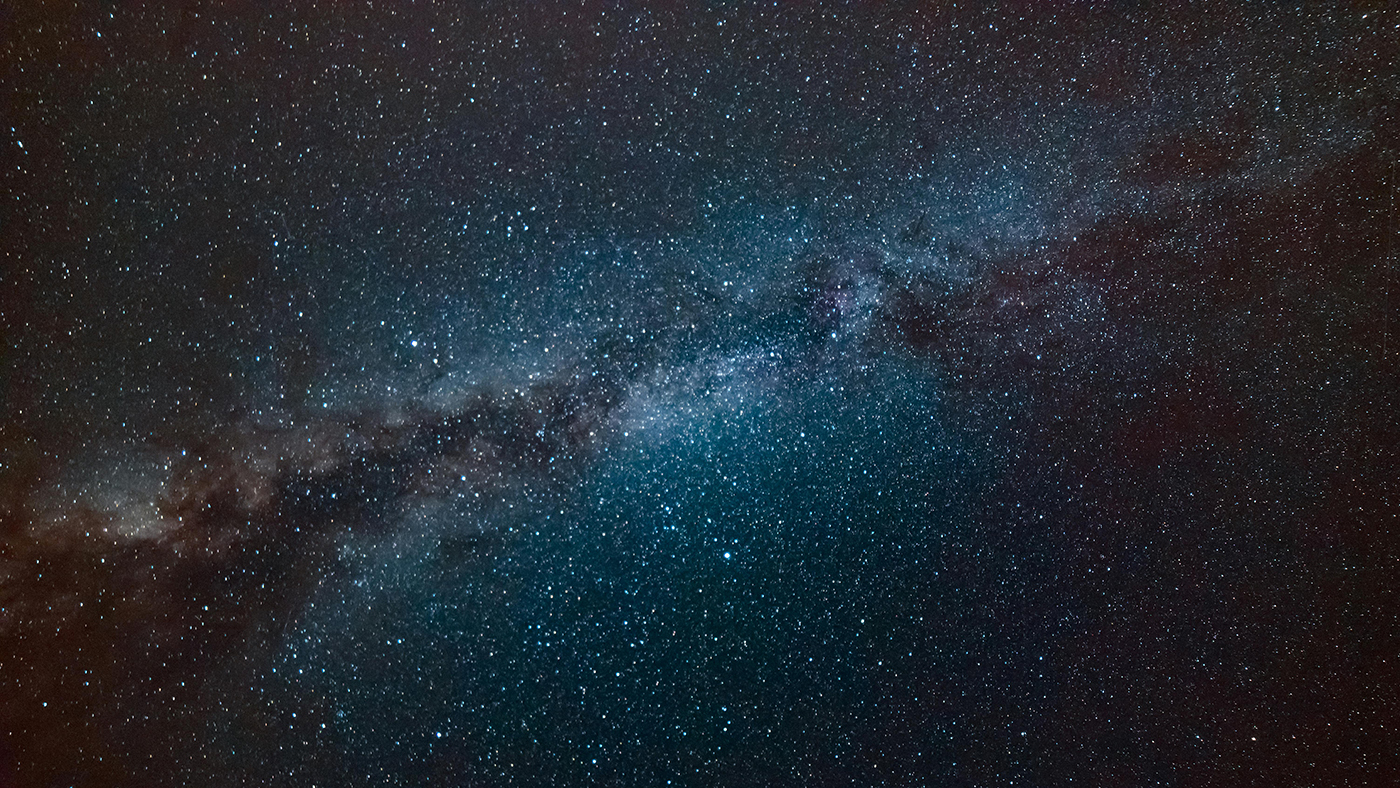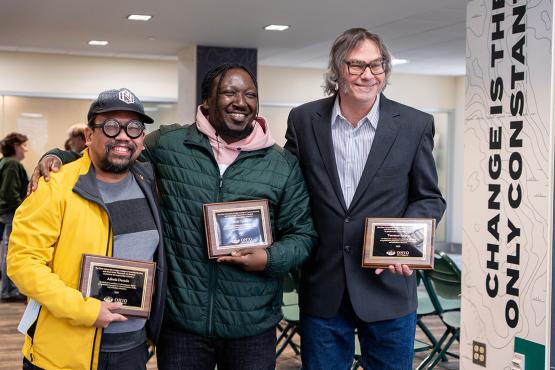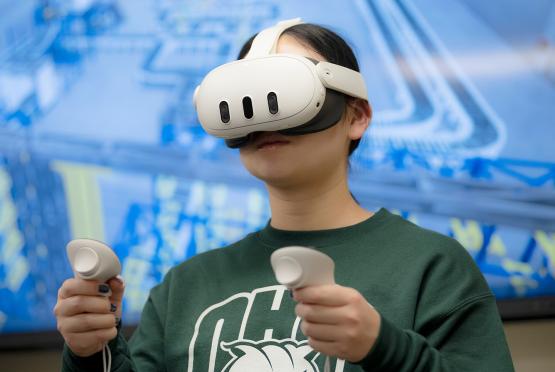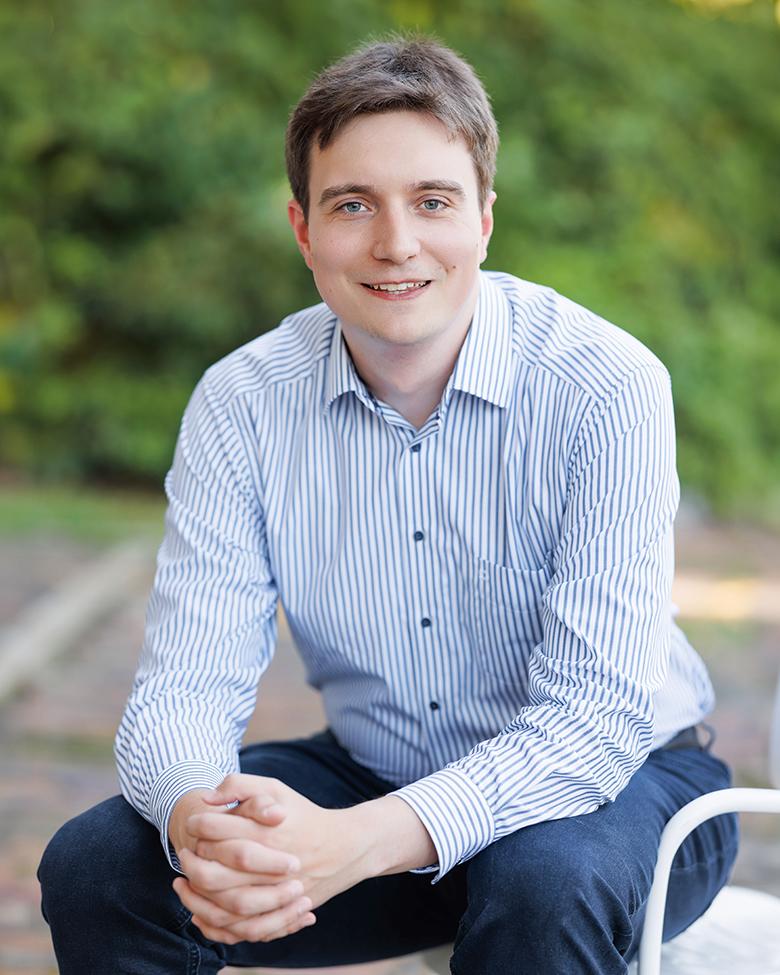
Ohio University’s Dr. Christian Drischler is building a strong foundation for a lifetime of leadership in research and education. Drischler is an assistant professor of Physics and Astronomy in the College of Arts and Sciences and Bridge Faculty of the U.S. Department of Energy Facility for Rare Isotope Beams (FRIB) Theory Alliance who conducts research at the intersection of theoretical nuclear physics and nuclear astrophysics. His projects will advance the scientific community's understanding of these complex fields, support OHIO students and educate the community through accessible learning events.
The U.S. National Science Foundation (NSF) recently recognized Dr. Drischler with the Faculty Early Career Development Program (CAREER) Award. In addition to being an impressive accolade as NSF’s most prestigious award for early-career scientists, the CAREER Award will also fund Drischler’s research projects with nearly $450,000.
Drischler studies the strong force, one of the four fundamental forces of nature. It binds protons and neutrons together within nuclei at the center of atoms and stabilizes neutron stars, among the densest objects in the observable universe, against gravitational collapse. Through his theoretical research of strongly interacting matter, Drischler seeks answers to some of the biggest questions in nuclear physics and nuclear astrophysics:
- What is the nature of matter at extreme temperatures and densities?
- How does subatomic matter organize itself?
- Where do heavy elements like gold come from in the universe?
“This is leading research in nuclear physics and nuclear astrophysics,” said Drischler. “Theoretical research to understand strongly interacting dense matter, what matter it is made of and what properties it has, although not directly, branches out in many different fields like medicine—for example, cancer treatments—and material research.”

In 2017, while Drischler was completing his Ph.D. at Technical University Darmstadt, in Germany, gravitational waves from a binary neutron star merger were measured directly for the first time by the LIGO-Virgo scientific collaboration. This event reinforced his excitement about the fields of theoretical nuclear physics and nuclear astrophysics but also ushered in a whole new era of multimessenger astronomy—referring to the joint observation of multiple signals from the same astronomical event and one of NSF’s Big Ideas.
“Gravitational-wave astronomy and the merger event GW170817 opened a new window to the universe,” said Drischler. “The new messenger was gravitational waves that had never been directly detected from a neutron star merger before—in addition to other messengers like electromagnetic waves. This is an exciting era for my entire research field because we can now get new, never dreamt-of insights into neutron stars, and that means insights into strongly interacting matter at the extremes.”
Part of this research involves using chiral effective field theory of the strong interaction to make predictions for the structure and composition of neutron stars. These first-principles predictions can then be confronted with data collected from ground- and space-based telescopes, such as NASA’s Neutron star Interior Composition Explorer (NICER), and laboratory experiments, such as those conducted at FRIB and the local Edwards Accelerator Laboratory. NICER is installed on the International Space Station (ISS) and simultaneously measures the masses and radii of neutron stars. Insights from neutron star observation and laboratory experiments help us validate and improve our effective theory of the strong interaction and their predictions, contributing to an overall greater understanding of strongly interacting matter in our universe.
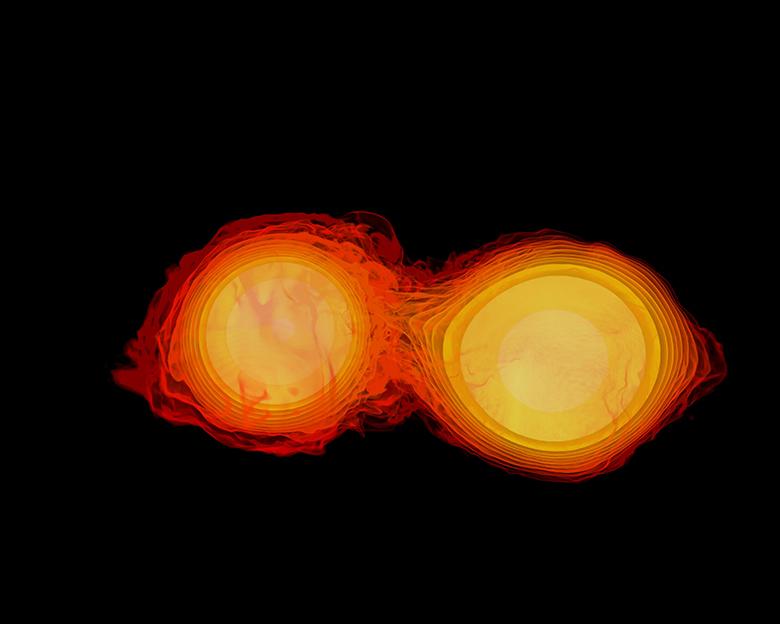
Grant-funded research is nothing new for Drischler. In addition to being selected as the recipient of the 2024 NSF CAREER award, he is the senior investigator of the U.S. Department of Energy-funded SmarT Reduction and Emulation Applying Machine Learning in Nuclear Environments (STREAMLINE) collaboration. As the collaboration’s senior investigator at OHIO, Drischler employs artificial intelligence (AI) and machine learning (ML) to solve the nuclear many-body problem and accelerate scientific discovery in nuclear physics research. His large-scale computations have significantly contributed to our understanding of dense matter and neutron-star properties using modern theoretical and statistical approaches.
“The NSF’s CAREER program is their flagship program for early-career faculty. It is distinctive in that It supports faculty to set and achieve ambitious goals not only in research but also in teaching and public engagement,” said Dr. Matthew Ando, Ohio University professor and Dean of the College of Arts and Sciences. “I congratulate Professor Drischler on this well-deserved award and thank him for the contributions that led to it. I look forward to seeing what he will do in the future.”
Accelerating physics research through collaboration
Part of what led Dr. Drischler to OHIO was the Facility for Rare Isotope Beams (FRIB) Theory Alliance Bridge faculty position. Bridge faculty are outstanding young theorists who develop exceptional theoretical research relevant to rare isotope science, according to the FRIB Theory Bridge Program website.
“This allows me to act domestically and internationally as a representative of both FRIB science and Ohio University,” explained Drischler. “It also allows me to connect Ohio University students to this important facility of our research field by participating, for example, in FRIB-TA Summer Schools and Topical Programs.”
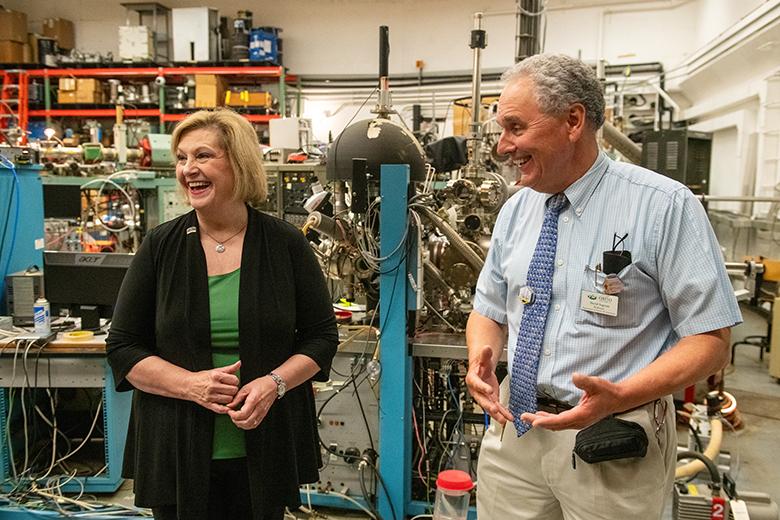
OHIO’s fruitful physics research environment also inspires Drischler and complements his NSF research project. Organizations like OHIO’s Nuclear Theory Group, Institute of Nuclear and Particle Physics, Astrophysical Institute and Edwards Accelerator Laboratory and their personnel create a uniquely rich situation for collaborative research. “With so many insightful colleagues to interact with,” Drischler says, “everyone benefits and a bigger physics picture is painted.”
“We all have different research interests within the Institute of Nuclear and Particle Physics, but we also have very fruitful overlap,” said Drischler. “For me, independent research has always been extremely important. While I can have my own research group here, I also enjoy collaborating with my current and former colleagues at OHIO, FRIB and Berkeley.”
Paying it forward
The NSF CAREER award will positively impact Drischler’s career and research, allowing him to support his own graduate and undergraduate students on their research projects over the next five years. The funding will also cover expenses for high-performance computing time, producing educational material and travel to conferences for him and his students to present their research. For Drischler, teaching and research complement each other, and the NSF CAREER award will allow motivated students to get even more involved.
“Regarding teaching, I have been fortunate to have excellent mentors who have shared their deep knowledge of physics and mentoring physics students with me,” he said. “I’m happy to do the same for the next generation of nuclear physicists. And I hope someday I will become as good a mentor to my students as my mentors have been to me. It’s a long road, but the road is the goal.”
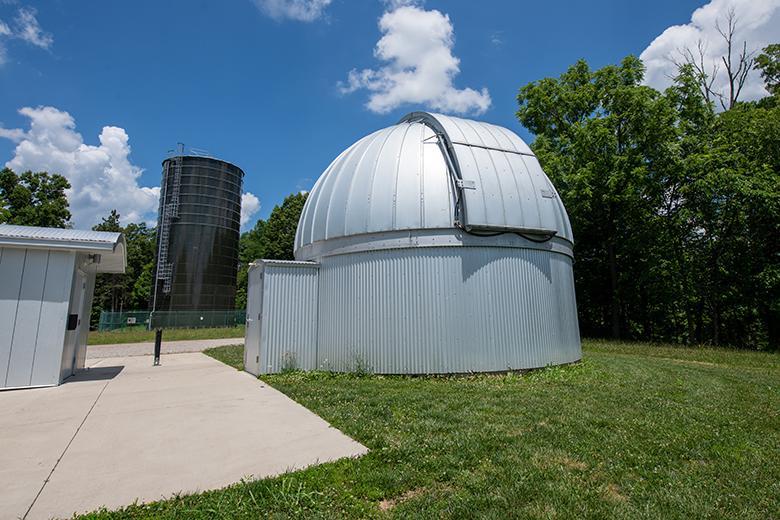
An integrated education portion of Drischler’s CAREER award project will also broadly benefit Appalachian Ohio beyond the University. Accessible, public learning events at Ohio University’s astronomy observatory at The Ridges and local public libraries will educate southeast Ohioans and increase their awareness of nuclear science. Drischler also hopes this outreach will spark students’ interest in STEM-related fields at an early age.
“The idea is to increase the public’s awareness of and literacy in this kind of research and make what we do daily understandable to the general public—what it may mean to them and society,” explained Drischler. “Projects like this help strengthen the global competitiveness and the leadership of the United States STEM workforce.”

